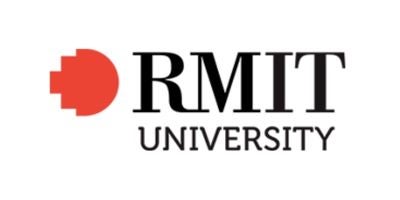
Higher Ed
Global Financial Impact of Diploma Mills and Academic Fraud
Explore the $21B global industry of diploma mills, fake degrees, and academic fraud—and its economic toll on education, jobs, and trust.

What to Expect:
In a digital age where learner expectations are higher than ever, higher education institutions need a credential management approach that can keep pace. This white paper explores why transitioning to digital management solutions is crucial for addressing inefficiencies and fraud — all of which put institutions at risk of data breaches, operational delays, and compliance failures.
If you prefer to read this in PDF format click here:
Download White Paper
The growing problem of credential fraud, its causes, and the severe consequences it can have on the academic market.
How external threats, like cybercrime, affect higher education, including the most common types of attacks.
Challenges associated with relying on manual processes like spreadsheets and paper documents.

Best practices when switching from manual processes to a software solution that improves security, streamlines operations, and ensures compliance.
How credential management systems have enhanced efficiency, accuracy, security, and regulatory compliance.
Future-proofing credential management to avoid digital fraud and cybercrime.
As digital transformation accelerates, technology is reshaping education. With the academic market embracing digital credentials, secure management is crucial to boosting security, improving the student experience, and maintaining institutional reputation.
Manual process inefficiencies
Outdated manual systems are prone to errors, data management headaches, and compliance issues.
Fraudulent credentials
Colleges are overwhelmed by fake applications, fraudulent credentials, and last-minute transfers — signs of a system that may be too easy to exploit. Rising educational fraud jeopardises the integrity of academic qualifications and leads to legal, financial, and reputational fallout.

Inconsistent credentialing
When institutions use different credentialing processes, it can create gaps in verification and make it harder to ensure security.
Rising cyber threats
South East Asia’s rapid digital growth has driven an 82% increase in cybercrime in recent years, putting sensitive data and institutional reputations at risk.
Tougher compliance demands
Increasing regulations push institutions to uphold strict standards for data protection and credential accuracy.
Essentially, adopting digital solutions can streamline processes, enhance security, and ensure accuracy. However, achieving these benefits relies on embracing digital transformation and advanced credential management.
With their troves of sensitive data, South East Asian academic institutions are prime targets for cyber threats. In fact, educational institutions experienced 16 times more cyberattacks than commonly targeted organisations in healthcare and retail. Vulnerabilities like outdated software, lack of cybersecurity training, and weak response plans make them especially susceptible. That’s where risk management comes in.

Risk management involves identifying, assessing, and mitigating potential risks to minimise their impact on an institution or its Student Information System (SIS). By proactively addressing threats, universities can safeguard their operations and data from potential threats and disruptions.
When it comes to digital credentials, risk management helps institutions:
Minimising institutional threats is essential for protecting universities from cyber risks and keeping data secure, making the credentialing experience better for learners and staff alike.
Hearing about rising cyber threats in the academic sector is one thing, but the numbers make it real. Here are key statistics on cybercrime in South East Asia’s higher education sector, with similar impacts observed across the region:
As a result, cybersecurity emerges as a critical focus for higher education institutions.
Learners’ rising demand for credentials has created a lucrative opportunity for fraudsters to exploit fake qualifications. Credential fraud includes using false or manipulated academic records, often from degree mills, to deceive employers or institutions. This issue is escalating in the education sector, with degree mills now generating $7 billion annually in global sales.
Some of the most common examples of credential fraud in the South East Asia’s higher education system include:
Cases of counterfeit degrees and tampered transcripts can seriously tarnish an institution’s reputation and spark legal troubles if negligence is involved. The costs of legal defence and remediation can also be hefty, putting a strain on resources and shaking up institutional trust and integrity.
While 72% of business leaders in South East Asia rank digital transformation among their top three priorities, the journey remains challenging. Consequently, many institutions continue to rely on outdated credential management methods, such as spreadsheets and paper documents.
This leads to inefficiencies and risks, including:

To simplify academic credentialing, RMIT University embraced My eQuals powered by Parchment*, saving $830,000 a year and cutting down on waste. Students can now access secure, tamper-proof digital credentials instantly — making it easier than ever to share their achievements. By streamlining processes and boosting staff productivity, RMIT has created a more efficient and user-friendly experience for students and alumni alike.
*My eQuals is the official digital credential platform for tertiary education in Australia and New Zealand, powered by Parchment. It’s a collaboration with universities and the Higher Education Standards (HES) governing body, providing secure, digital credentialing for students.
South East Asia continues to grapple with inefficient manual processes, rising credential fraud, and increasing cyber risks. However, the region’s economic growth has spurred government and parental funding for educational technology to tackle these challenges, expand access to education, and support educators in enhancing learning outcomes.
Meanwhile, with only 10% of South East Asian EdTech companies able to demonstrate the effectiveness of their products, education policymakers must base their investments on solid evidence and consider the long-term impacts of their decisions.
As digital solutions gain more traction, digital credential management systems are becoming essential for institutions to efficiently issue, store, and verify academic credentials. And as educational technology gains traction, providers like Parchment are leading the charge with cutting-edge solutions for managing credentials and badges. These secure systems not only protect sensitive data but also deliver a seamless, user-friendly experience for students and academic institutions — transforming how credentials are handled in today’s digital age.

Credential management is transforming the way institutions handle and secure credentials today. Discover the advantages for higher education switching to a digital system:
With cutting-edge encryption and strong authentication methods, digital credential systems greatly reduce the risk of unauthorised access and tampering — offering top-notch protection against fraud.
Parchment ensures data security by storing it in the cloud under local privacy laws and protecting academic documents with digital signatures, hosted sharing, and blockchain notarisation. This includes partnering exclusively with accredited education providers to guarantee legitimate, tamper-proof records.
Say goodbye to delays. Digital systems like Parchment provide immediate access to up-to-date and accurate records, so information is always current and at stakeholders’ fingertips.
Automating credential issuance means less paperwork and fewer errors. This not only cuts down on administrative burdens but also allows institutions to allocate their resources more efficiently.
With Parchment, what used to take weeks — printing and posting thousands of transcripts — can now be done in minutes, all online. Plus, the self-service platform allows students to access and share their records at any time, reducing the need for institutional involvement and enabling secure back-to-source verification for employers.
Managing large volumes of credentials becomes a breeze with digital systems that scale. Whether you’re handling hundreds or thousands of students, there’s no need to worry about physical storage limitations. As institutions aim to increase learner registrations, digital solutions like Parchment can seamlessly expand to accommodate more learners ensuring your credentialing process keeps pace with your growth.
Digital credentials slash costs related to printing, mailing, and storing physical documents. Plus, they minimise the need for extensive administrative work, significantly cutting the time spent issuing.
Digital credential systems ensure compliance with personal data protection regulations across the South East Asian region — from Singapore to Malaysia’s PDPA and beyond. Plus, with built-in compliance tools, auditing and reporting are simplified.
Institutions can create and customise digital badges and certificates to showcase individual achievements, reflecting each learner’s journey.
Credential management systems integrate effortlessly with existing SIS and learning management systems. This creates a more unified and efficient workflow.
For instance, Parchment’s modern REST APIs enable integration with any SIS, including Banner, Oracle (PeopleSoft Campus Solutions), SITS, Callista, and more. Parchment has been successfully implemented worldwide in partnership with leading universities, using web services and XML data standards for easy data export. As a result, institutions have noted improvements in student data accuracy and cleansing.
Reducing the need for paper-based processes contributes to sustainability efforts, promoting eco-friendly practices in line with modern environmental goals.

Choosing a system with strong security features and functionality tailored to your needs. Key factors to consider include:

Customisation
Need flexibility? Ensure the platform can adapt to your unique requirements.

Vendor support
Pick a provider known for robust support during and after implementation.
Compliance requirements
Confirm the platform meets relevant regulations.

Scalability
Choose a platform that grows with your institution, handling future demands without frequent upgrades.
A global network
Opt for a platform with a global network to easily support student sharing across institutions, fostering trust and ensuring seamless learner mobility.
A few tips for successful implementation:
This is just the start of credential management in higher education. The future is brimming with exciting advancements, including:
The future of credential management is heading toward lifelong learner accounts, where individuals can securely store and share their academic achievements in one digital space. This gives students greater flexibility and control over their records throughout their education and career.
As demand for a standardised credential system grows, a global exchange will allow learners to share qualifications across borders, opening doors to both regional and international opportunities. This global collaboration will make it easier for students to build an international academic profile and take achievements anywhere in the world.
Looking ahead, emerging interoperability standards will enable seamless credential sharing and verification across different platforms, simplifying integration. At the same time, advanced analytics tools will provide deeper insights into credentialing trends, helping institutions refine their strategies.
Finally, and perhaps most importantly, personalised learning pathways will gain prominence — with credentialing systems increasingly supporting tailored achievements that reflect individual learning journeys.
A credentialing management platform with robust security protocols is crucial for higher education institutions to safeguard against evolving cyber threats, operational challenges, and credential fraud. Transitioning from manual to digital systems not only enhances security but also streamlines administrative processes.
Now is the time to embrace digital, and Parchment is here to make that transition seamless. With Parchment, institutions benefit from advanced security measures, including adherence to ISO 27001, SOC 2 Type II, and PCI DSS compliance. The platform also ensures:
By choosing Parchment, you can effectively manage credentials and digital badges to reduce administrative burdens and focus on what matters most — empowering student success.

